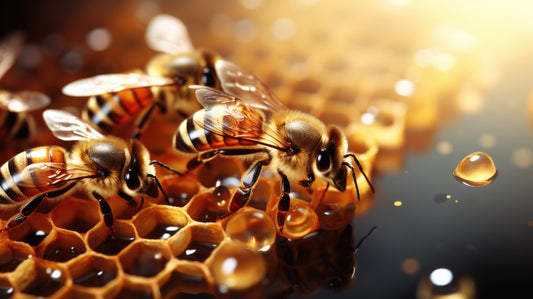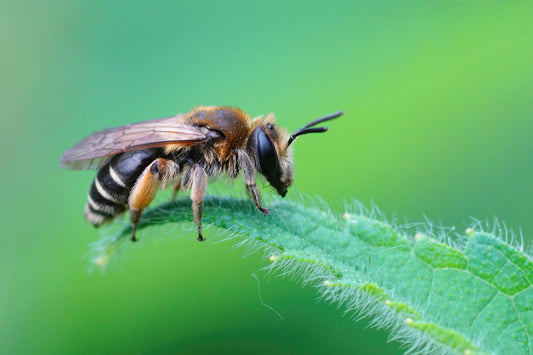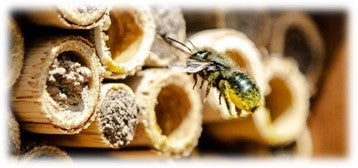
While bees and butterflies reign during daylight hours, a remarkable set of pollinators emerges at nightfall. Bats serve as essential pollinators for over 500 species of flowering plants across at least 67 plant families worldwide1. These nocturnal heroes play a crucial role in maintaining biodiversity and ensuring the survival of numerous plant species that have evolved to depend on their unique pollination services.
The Pollinator Partnership
- Nature's pollination system operates in perfect shifts. During daylight, bees busily collect pollen from flowering plants, while butterflies gracefully float between blooms. As dusk approaches, nectar-feeding bats take over, particularly in tropical and desert climates. This 24-hour pollination cycle ensures maximum efficiency in plant reproduction and ecosystem maintenance.
Nocturnal Garden Champions
Unlike their daytime counterparts, bats possess specialized features for night pollination that have evolved over millions of years:
-
Elongated snouts and tongues for nectar collection
-
Smaller teeth for efficient feeding
-
Powerful echolocation abilities for night navigation
-
Fur that effectively carries pollen between plants

These remarkable adaptations allow bats to access nectar and pollen in ways that other pollinators cannot, making them irreplaceable contributors to plant diversity and ecosystem health.
Creating a 24-Hour Pollinator Paradise
To support both day and night pollinators, successful gardens must incorporate specific elements that cater to different species' needs1. The following features are essential for creating a thriving nocturnal pollinator habitat:
For Nocturnal Visitors
-
Night-blooming flowers that open at dusk
-
Large flowers (1 to 3.5 inches) accessible to bat faces
-
Pale or white blooms that reflect moonlight
-
Strong-scented plants with fermenting or fruity odors
-
Bell-shaped or vase-like flowers
-
Open areas for flight paths
These carefully selected features ensure that bats can easily locate and access the nectar they need while providing essential pollination services.
Conservation Benefits
Supporting multiple pollinator species creates a more resilient ecosystem. Bats serve as particularly effective pollinators because of several unique characteristics:
-
They can transport pollen up to 17km between plants
-
They deposit large amounts of pollen during each visit
-
They provide diverse pollen genotypes
-
They excel at long-distance pollination
-
They make plants more resistant to disease and pests
Economic Impact
The economic value of bat pollination cannot be understated. These nocturnal pollinators support numerous economically important crops, including:
-
Mangoes
-
Bananas
-
Guavas
-
Agave (used for tequila)
-
Durian
-
Eucalyptus
The loss of bat populations could have devastating effects on agricultural production and food security worldwide. Their pollination services contribute significantly to both ecosystem health and human food systems.
By recognizing the complementary roles of bees, butterflies, and bats, gardeners can create vibrant ecosystems that thrive around the clock. These night shift heroes, working alongside their daytime counterparts, ensure our gardens remain productive and resilient through their essential pollination services.
This process, known as chiropterophily, represents one of nature's most fascinating examples of co-evolution between plants and their pollinators1. A garden that welcomes all pollinators is truly a garden that flourishes, supporting biodiversity while maintaining crucial ecological processes that benefit both wildlife and human communities.
The preservation of bat populations and their habitats is essential for maintaining healthy ecosystems and ensuring the continued production of many important agricultural crops. By creating bat-friendly gardens and supporting conservation efforts, we can help protect these remarkable creatures and the vital services they provide to our world.
After learning about these remarkable nocturnal pollinators, are you inspired to create your own pollinator-friendly garden? Just as my passion project began with simple solitary bee boxes spotted at a botanical garden and blossomed into Camas Pollinator Supply Co., your garden too can become a thriving ecosystem supporting these essential creatures.
Visit our Amazon store where our small but dedicated team—who share Garrett's farming background and love for pollinator-friendly spaces—has carefully curated everything you need to build a thriving pollinator garden.
Bring Your Garden to Life – Discover our complete pollinator kits and watch as bees by day and bats by night bring unprecedented biodiversity to your backyard sanctuary.





